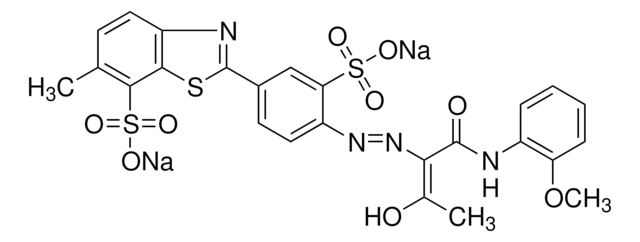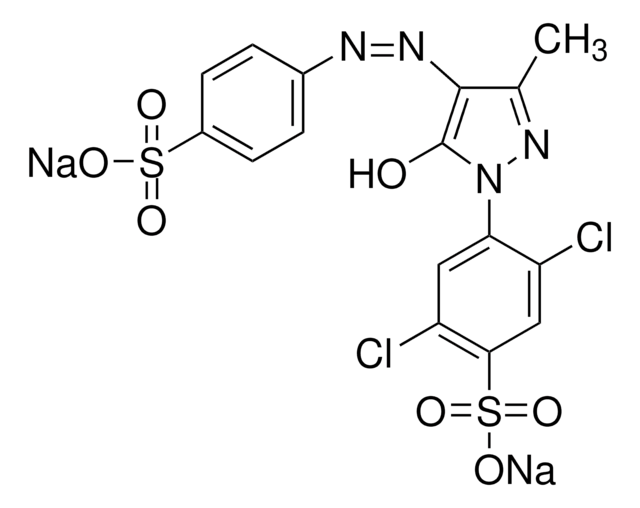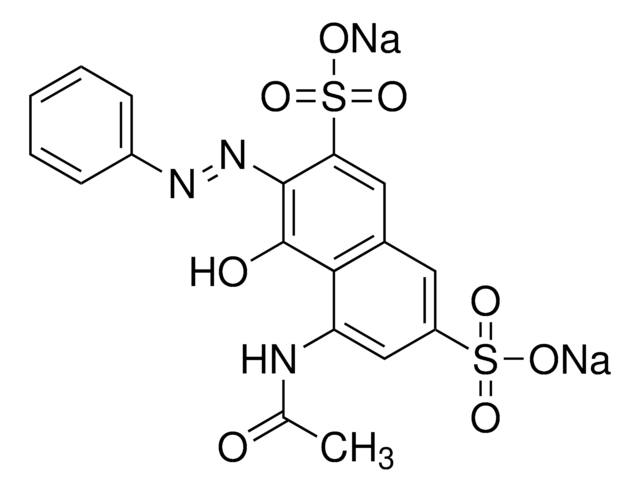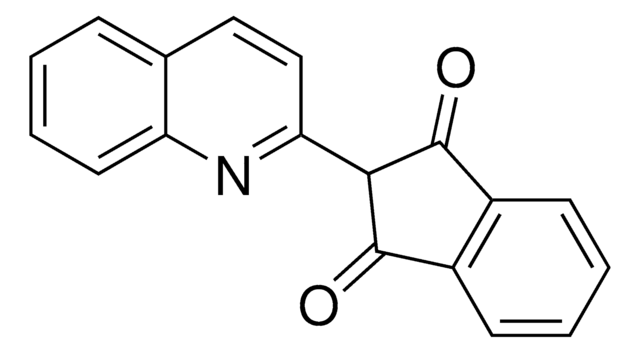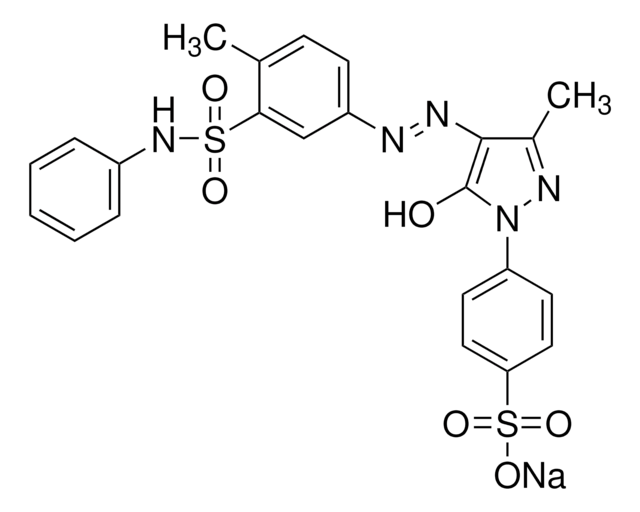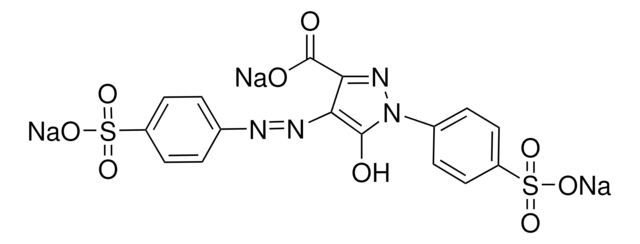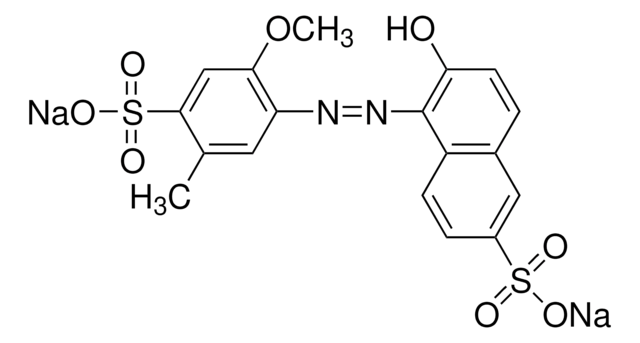201987
Säuregelb 17
Dye content 60 %
About This Item
Empfohlene Produkte
Form
powder
Qualitätsniveau
Zusammensetzung
Dye content, 60%
λmax
400 nm
ε (Extinktionskoeffizient)
≥8000 at 252-258 nm in water at 0.02 g/L
Anwendung(en)
diagnostic assay manufacturing
hematology
histology
Lagertemp.
room temp
SMILES String
[Na+].[Na+].CC1=NN(C(=O)C1\N=N\c2ccc(cc2)S([O-])(=O)=O)c3cc(Cl)c(cc3Cl)S([O-])(=O)=O
InChI
1S/C16H12Cl2N4O7S2.2Na/c1-8-15(20-19-9-2-4-10(5-3-9)30(24,25)26)16(23)22(21-8)13-6-12(18)14(7-11(13)17)31(27,28)29;;/h2-7,15H,1H3,(H,24,25,26)(H,27,28,29);;/q;2*+1/p-2/b20-19+;;
InChIKey
FTZLWXQKVFFWLY-LLIZZRELSA-L
Suchen Sie nach ähnlichen Produkten? Aufrufen Leitfaden zum Produktvergleich
Allgemeine Beschreibung
Anwendung
Lagerklassenschlüssel
11 - Combustible Solids
WGK
WGK 3
Flammpunkt (°F)
Not applicable
Flammpunkt (°C)
Not applicable
Persönliche Schutzausrüstung
Eyeshields, Gloves, type N95 (US)
Choose from one of the most recent versions:
Besitzen Sie dieses Produkt bereits?
In der Dokumentenbibliothek finden Sie die Dokumentation zu den Produkten, die Sie kürzlich erworben haben.
Unser Team von Wissenschaftlern verfügt über Erfahrung in allen Forschungsbereichen einschließlich Life Science, Materialwissenschaften, chemischer Synthese, Chromatographie, Analytik und vielen mehr..
Setzen Sie sich mit dem technischen Dienst in Verbindung.